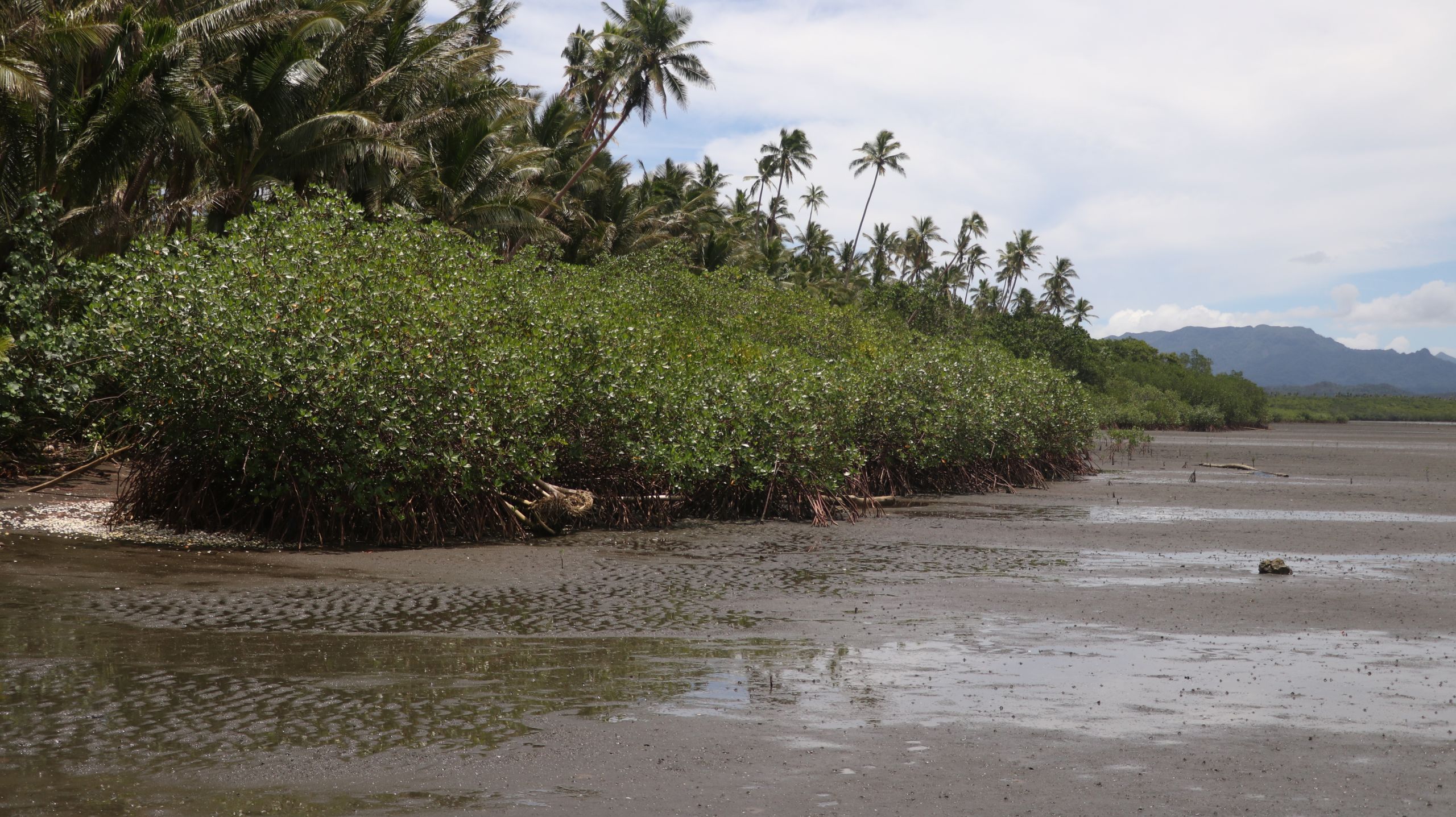Balancing climate, culture, and community: Fiji’s relocation challenge
With climate-induced displacement on the rise, efforts are underway to make relocation a community-led process. But in practice, balancing measurable climate risk and the difficult-to-quantify value of cultural heritage is challenging.

Since Ratu Kavida Lalama was elected six years ago as Turaga ni Koro, the head of the Fijian village of Korolevu, he has overseen something unprecedented — the voluntary relocation of residents to a new spot, 2 kilometers (1.2 miles) away and uphill from the coast. The reason: climate change.
“The rising of sea levels and increased flooding due to climate change was damaging homes and our families’ lives,” Lalama said, who made the decision to relocate along with two-thirds of the village’s 100-plus residents.
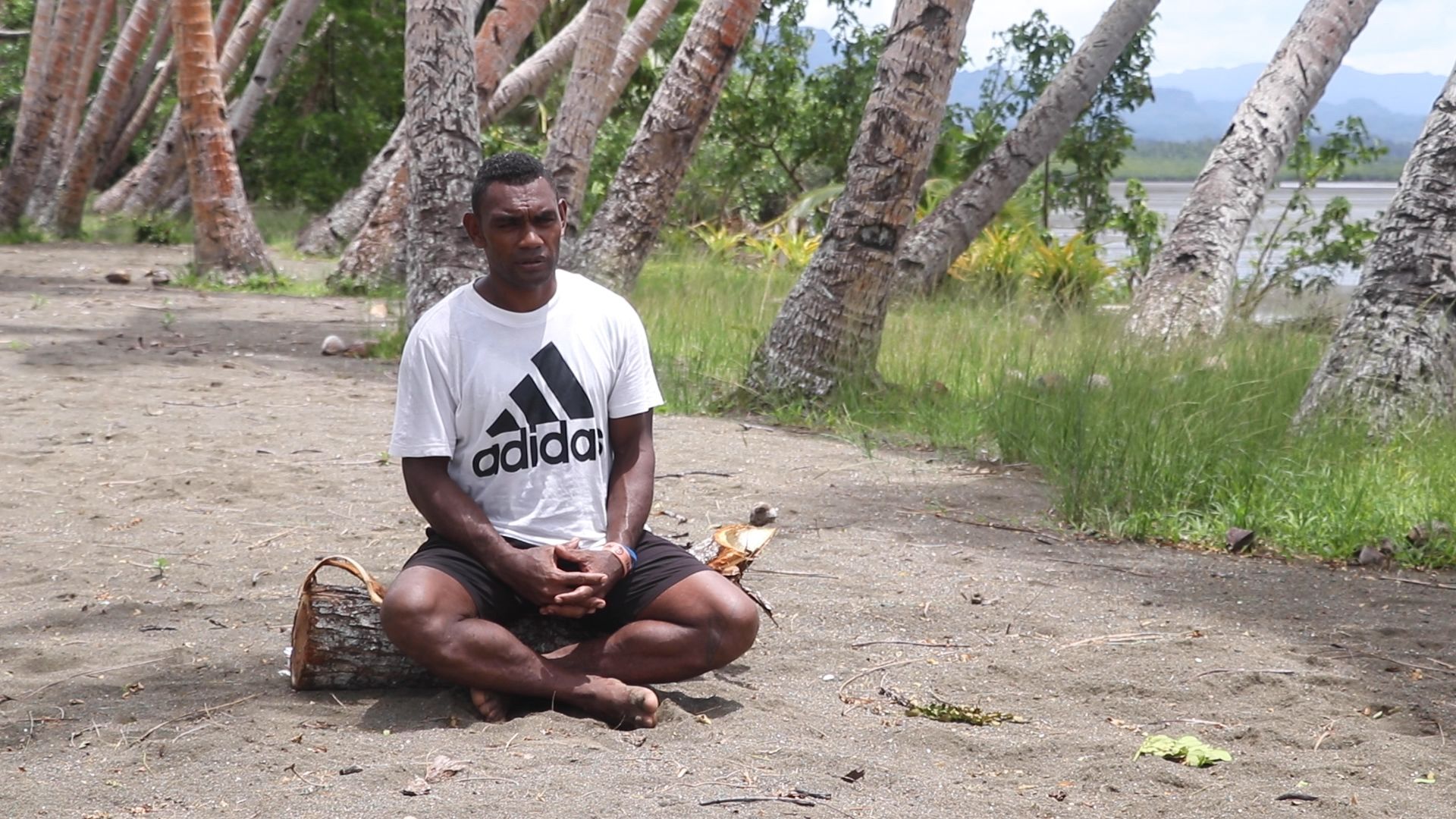
Ratu Kavida Lalama, head of Korolevu, oversaw the voluntary relocation of two-thirds of the village's residents.
Ratu Kavida Lalama, head of Korolevu, oversaw the voluntary relocation of two-thirds of the village's residents.
Korolevu has been located for generations on the coast of Fiji’s second-largest island of Vanua Levu. Residents had to cross a river to get to the main road in order to go to school or to access health care. That river has become increasingly treacherous as water levels rise.
But the move has come at a cost — the loss of their traditional, daily connection to the sea.
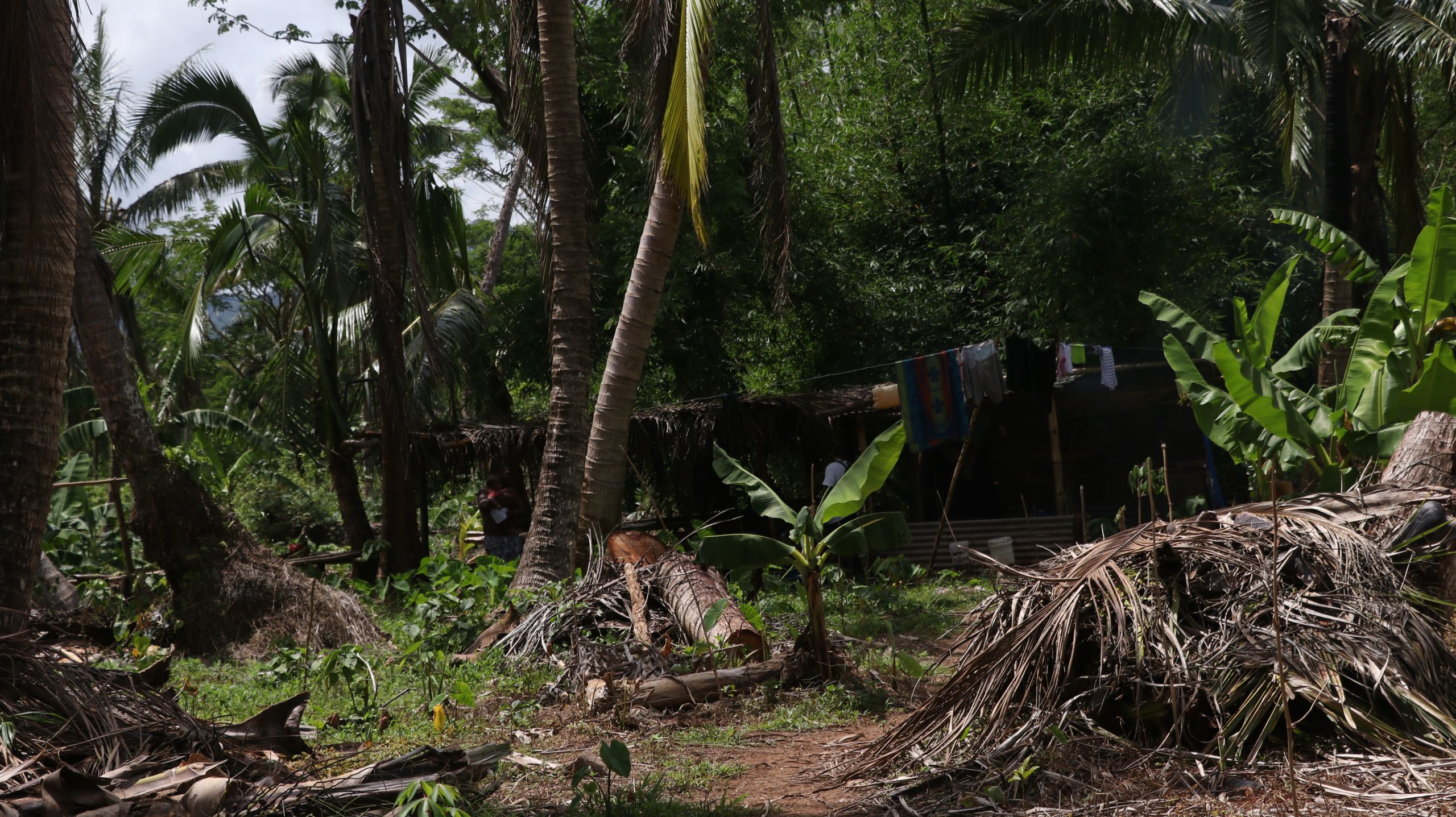
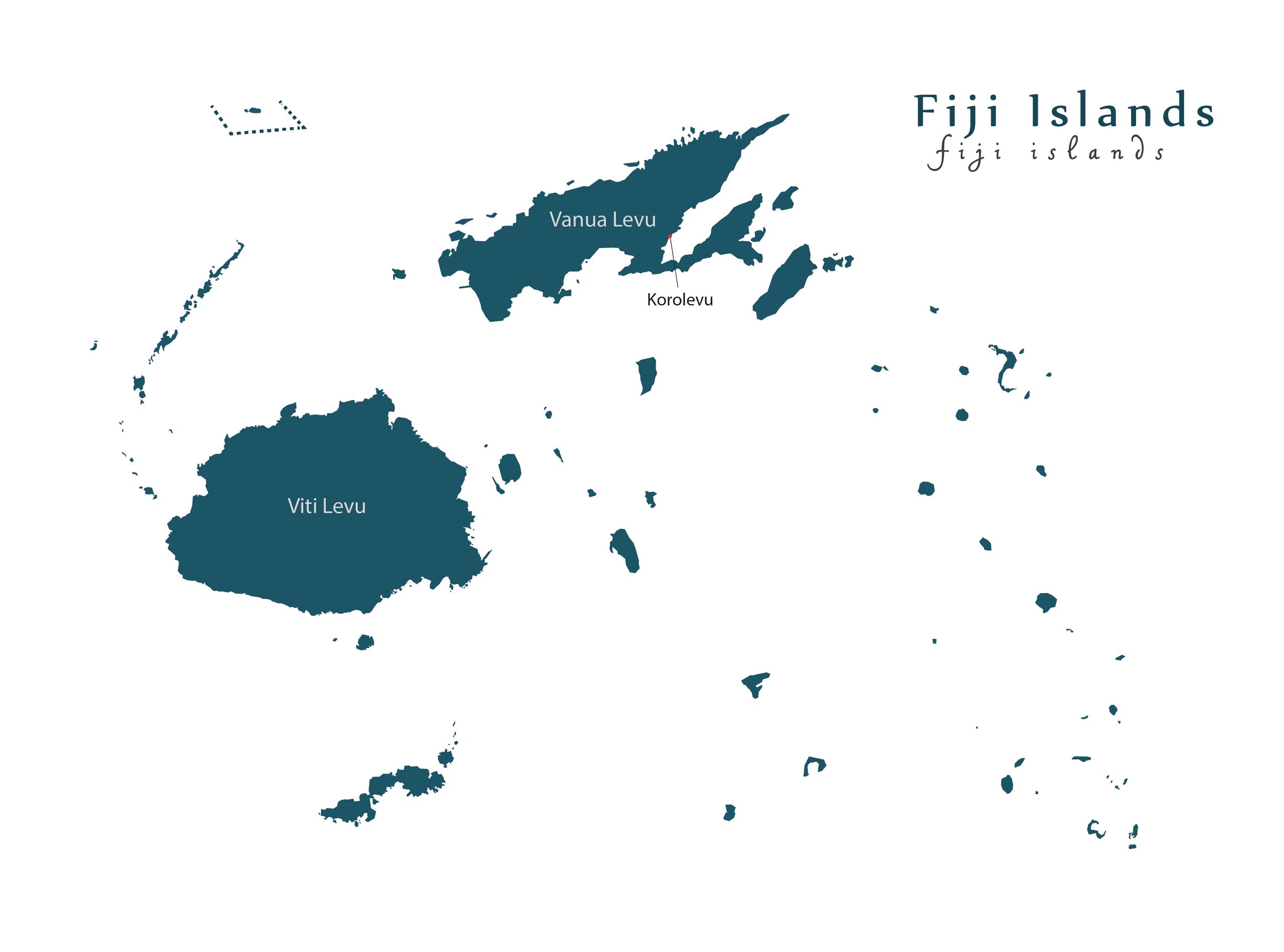
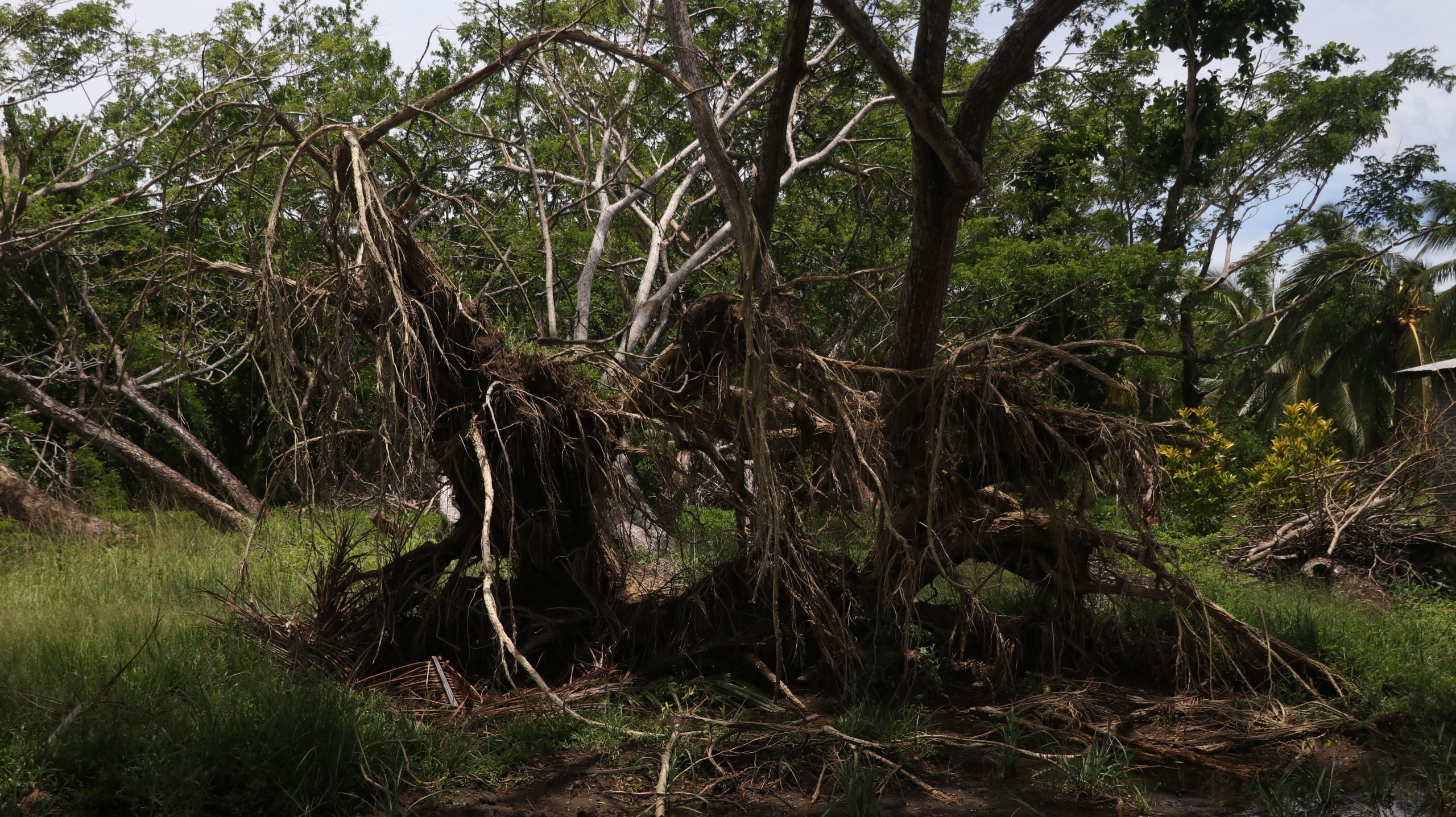
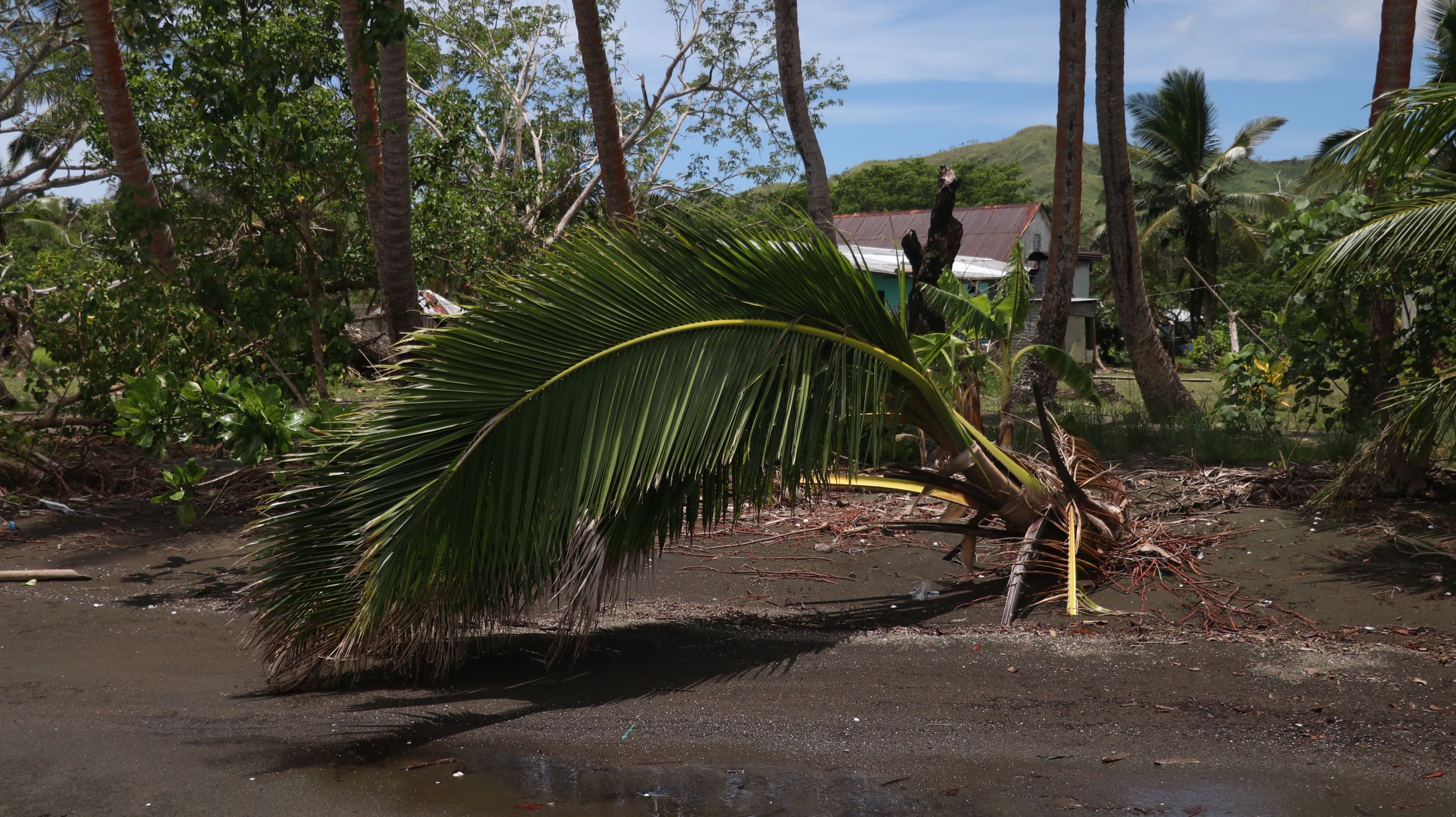


Cyclone Yasa, a category five storm, hit Vanua Levu in December 2020, causing widespread destruction.
Cyclone Yasa, a category five storm, hit Vanua Levu in December 2020, causing widespread destruction.

It was the second Category Five storm to hit the country in a decade.
It was the second Category Five storm to hit the country in a decade.

In the Pacific, low-lying coastal communities like Korolevu are already dealing with the difficult challenge of how, when, and where entire communities may have to relocate.
In the Pacific, low-lying coastal communities like Korolevu are already dealing with the difficult challenge of how, when, and where entire communities may have to relocate.
“Before when we were staying in the old Korolevu, we would go fishing every day. At the new Korolevu, sometimes we only go fishing one or two days a week,” Lalama said. This, along with a lack of financial resources, is why some villagers have remained at the old, flood-prone location.
The decision proved its value during Cyclone Yasa, a category five storm that hit Vanua Levu in December 2020, when a recently constructed community center, built at this new, higher elevation location, provided shelter to the residents. The center was funded by Seacology, an NGO that has been working with Korolevu to protect nearly 2,000 acres of forest and 900 acres of mangroves and marine habitat for 15 years, in exchange for the conservation work.
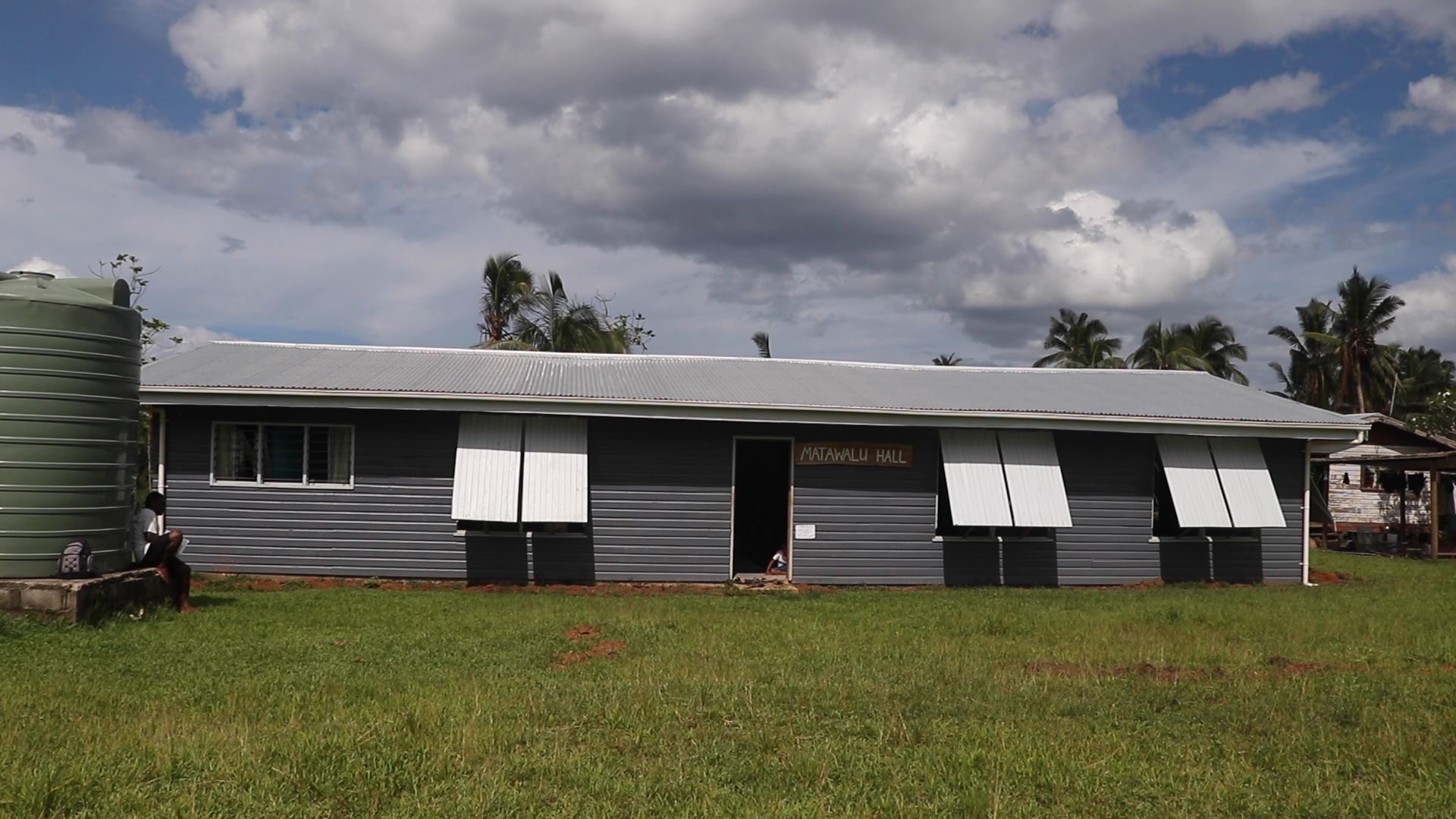
During Cyclone Yasa, Korolevu's residents sheltered in the new community center.
During Cyclone Yasa, Korolevu's residents sheltered in the new community center.
“One hundred percent of the village was evacuated to the center,” Lalama said. “During the cyclone, the residents said they never felt any shaking from the wind, and were relaxed, and slept well.”
Korolevu’s choice is one facing many communities across the Pacific, and around the world. There could be as many as 143 million people internally displaced by climate change by 2050 if more is not done to address global greenhouse gas emissions, according to a report from the World Bank. Rising sea levels, saltwater intrusion, and extreme weather events are some of the risk factors that people face. But while for much of the world climate-induced displacement is still a future concern, in the Pacific, low-lying coastal communities are already dealing with the very difficult challenge of how, when, and where entire communities may have to relocate.

Seacology has been working with Korolevu to protect nearly 2,000 acres of forest and 900 acres of mangroves and marine habitat.
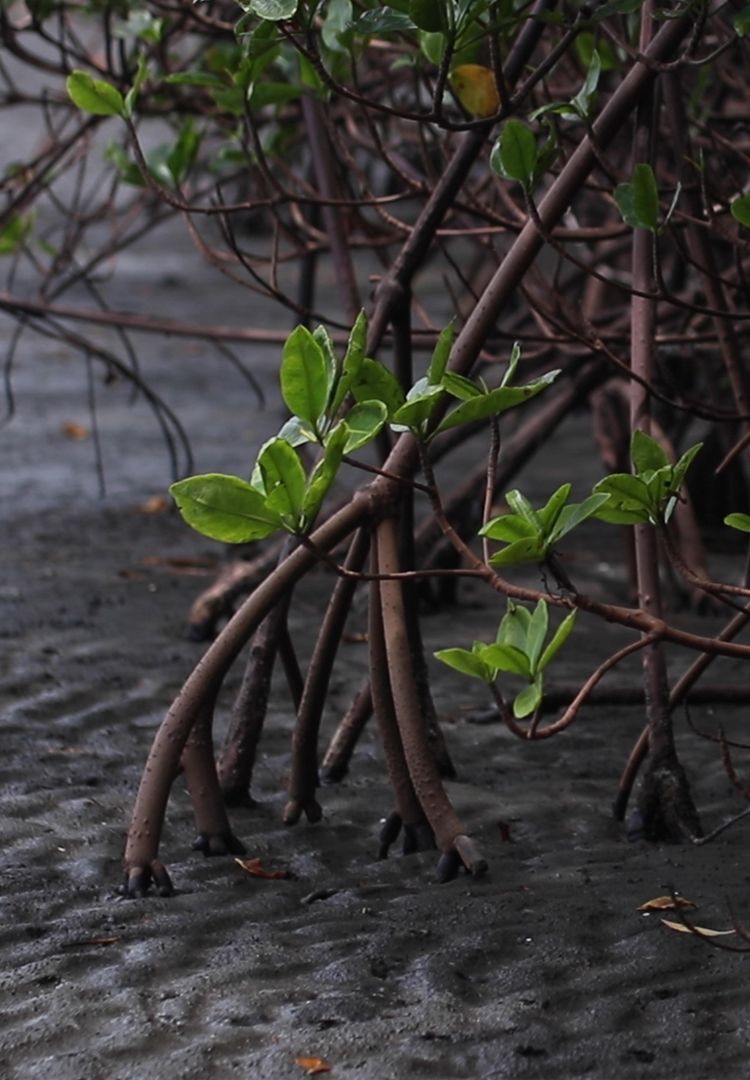
Mangrove forests can reduce vulnerability of coastal lands from storm surges by slowing the flow of water.

Seacology has been working with Korolevu to protect nearly 2,000 acres of forest and 900 acres of mangroves and marine habitat.
Seacology has been working with Korolevu to protect nearly 2,000 acres of forest and 900 acres of mangroves and marine habitat.

Mangrove forests can reduce vulnerability of coastal lands from storm surges by slowing the flow of water.
Mangrove forests can reduce vulnerability of coastal lands from storm surges by slowing the flow of water.
Ratu Kavida Lalama, head of Korolevu village, crosses the river that separates the old and new village locations.
Ratu Kavida Lalama, head of Korolevu village, crosses the river that separates the old and new village locations.
Helping communities lead
To prepare for these challenges, Fiji — the first country to ratify the 2015 Paris Agreement — officially released its relocation guidelines in late 2019. Described as a "living" document, the guidelines state that relocation will only be undertaken as a last resort, when other adaptation options such as seawall construction and wetlands rehabilitation are exhausted or not feasible.
The guidelines emphasize the importance of community leadership and household participation and decision-making around relocation. To further enable effective relocation funding, in 2020 Fiji also established the Climate Relocation and Displaced Peoples Trust Fund for Communities and Infrastructure, the world’s first relocation fund for people displaced by climate change. Thus far, Norway and New Zealand have contributed to the fund.
Ratu Kavida Lalama meets with members of the community in a building under construction in the new Korolevu village location.
Ratu Kavida Lalama meets with members of the community in a building under construction in the new Korolevu village location.
“We have done four relocations and built on the experience of the first ones in how we make the processes more inclusive, to ensure that all members of society [and] their voices are taken into account,” said Anare Leweniqila, the deputy permanent representative of Fiji’s mission to the United Nations.
In practice, true community-led relocation remains an aspiration. There are few successful examples yet numerous challenges in balancing the measurable economic impact of climate change with the intangible cultural value that indigenous Fijians have with the land their ancestors have lived on for generations, and the sea on which many depend for their livelihoods.
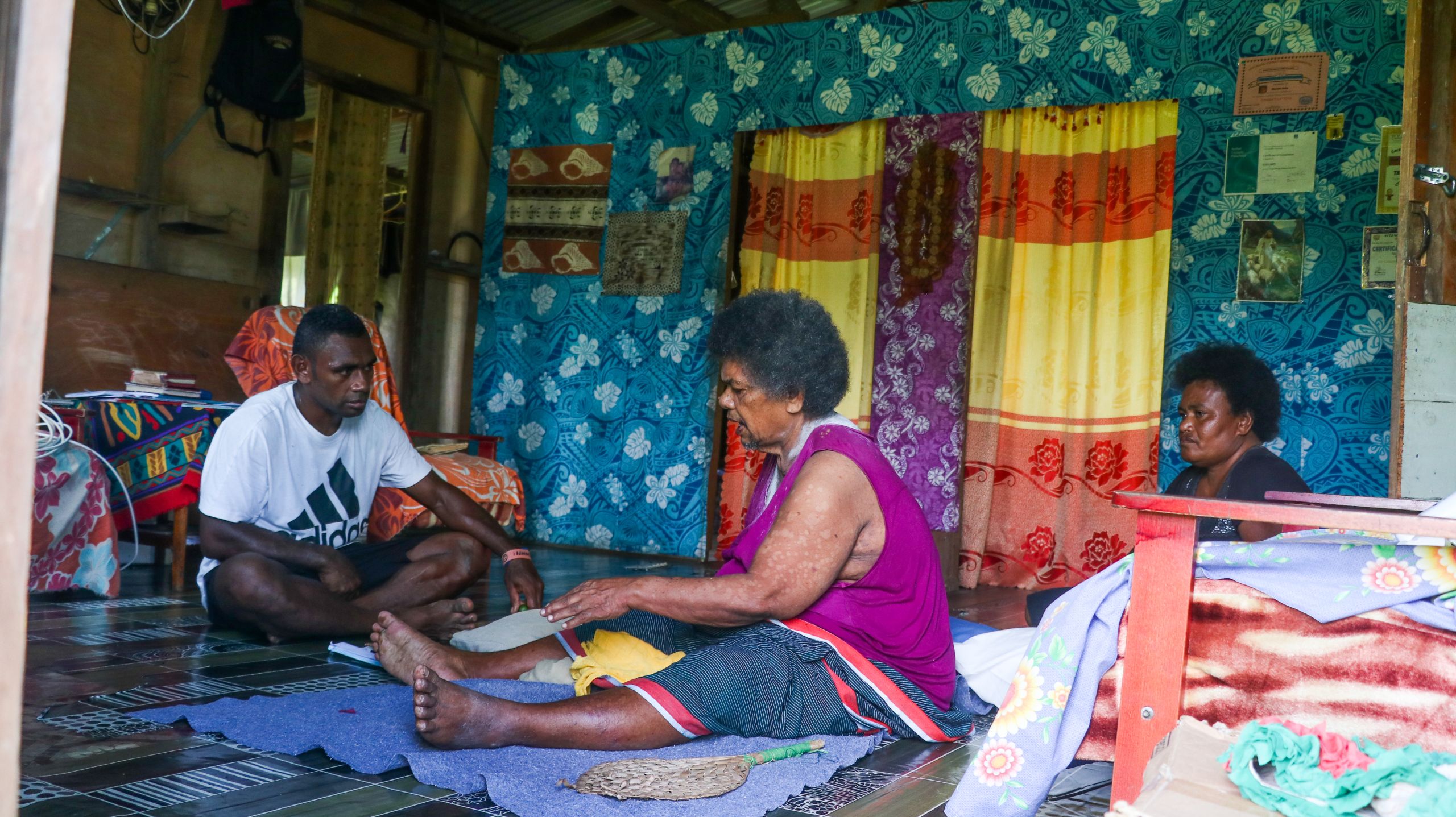
The move inland has cost Korolevu's residents the loss of their traditional, daily connection to the sea.
The move inland has cost Korolevu's residents the loss of their traditional, daily connection to the sea.
Local context matters — especially in the Pacific
One of the four villages that have been relocated with national and international support is Tukuraki in Ba province, located in the northwest of Viti Levu, Fiji’s largest island, and is regularly highlighted as a model relocation project. The original village was located next to a steep mountain, with families living alongside their fields. In 2012, it was devastated by a landslide that took place after a week of unusually heavy rain; 80% of the village was buried, most homes were destroyed, and four residents were killed.
In 2017, a new village located in a safer location 1.5 kilometers away was finished, and currently houses 11 families. However, Tukuraki is different than Korolevu, as it was not a planned relocation, with residents forced to leave due to the destruction of their homes and livelihoods, without any option of rebuilding. This experience, along with the other three relocated villages, may not be enough to guide future relocations.
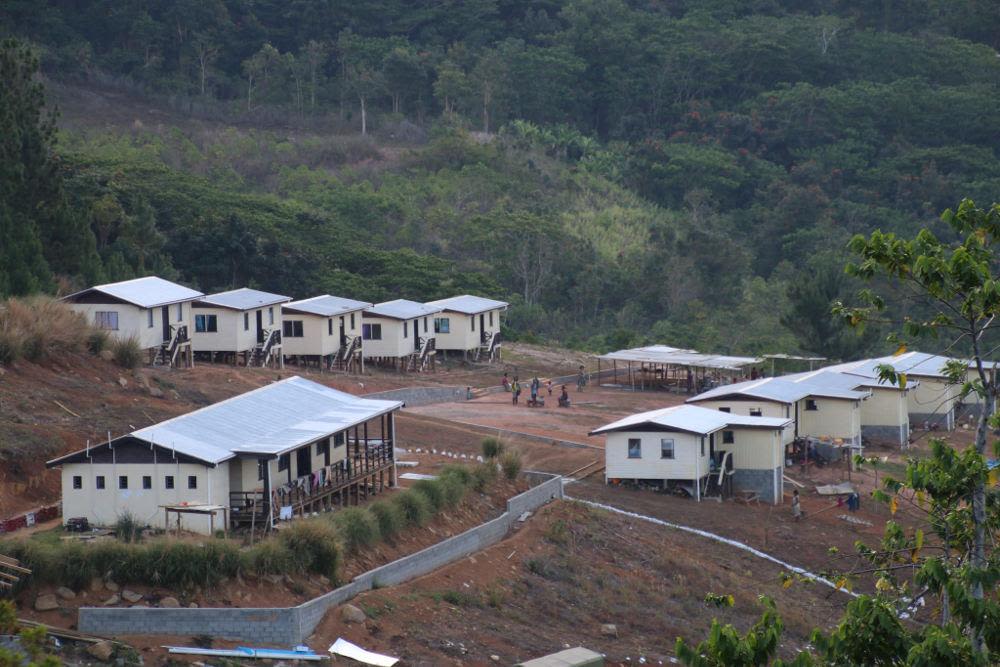
Tukuraki in Ba province, located in the northwest of Viti Levu, is regularly highlighted as a model relocation project. Photo: South Pacific Community
Tukuraki in Ba province, located in the northwest of Viti Levu, is regularly highlighted as a model relocation project. Photo: South Pacific Community
“So far the experience of relocating communities is still pretty limited,” said Andreas Neef, a professor of development studies at the University of Auckland, who has done extensive fieldwork in Fiji.
“Even in a country like Fiji, where you have a relatively large landmass, it doesn’t mean that if villages are moved away from the coast that these villages are necessarily safer,” Neef said.
According to Sabira Coelho, migration environment and climate change officer at the International Organization for Migration's regional office in Fiji, one area that deserves more attention are the local cultural factors, and understanding the importance of land to indigenous people in the region.
“You have to have recognition and acknowledgment of the spiritual and cultural links Pacific people have to the land to even understand what the implications are of climate relocation.”
Fiji’s guidelines do acknowledge this and make it clear that relocation is to be a community-led process. But in practice, balancing the potential risks and the difficult-to-quantify value of cultural heritage is challenging, and specific to each location.
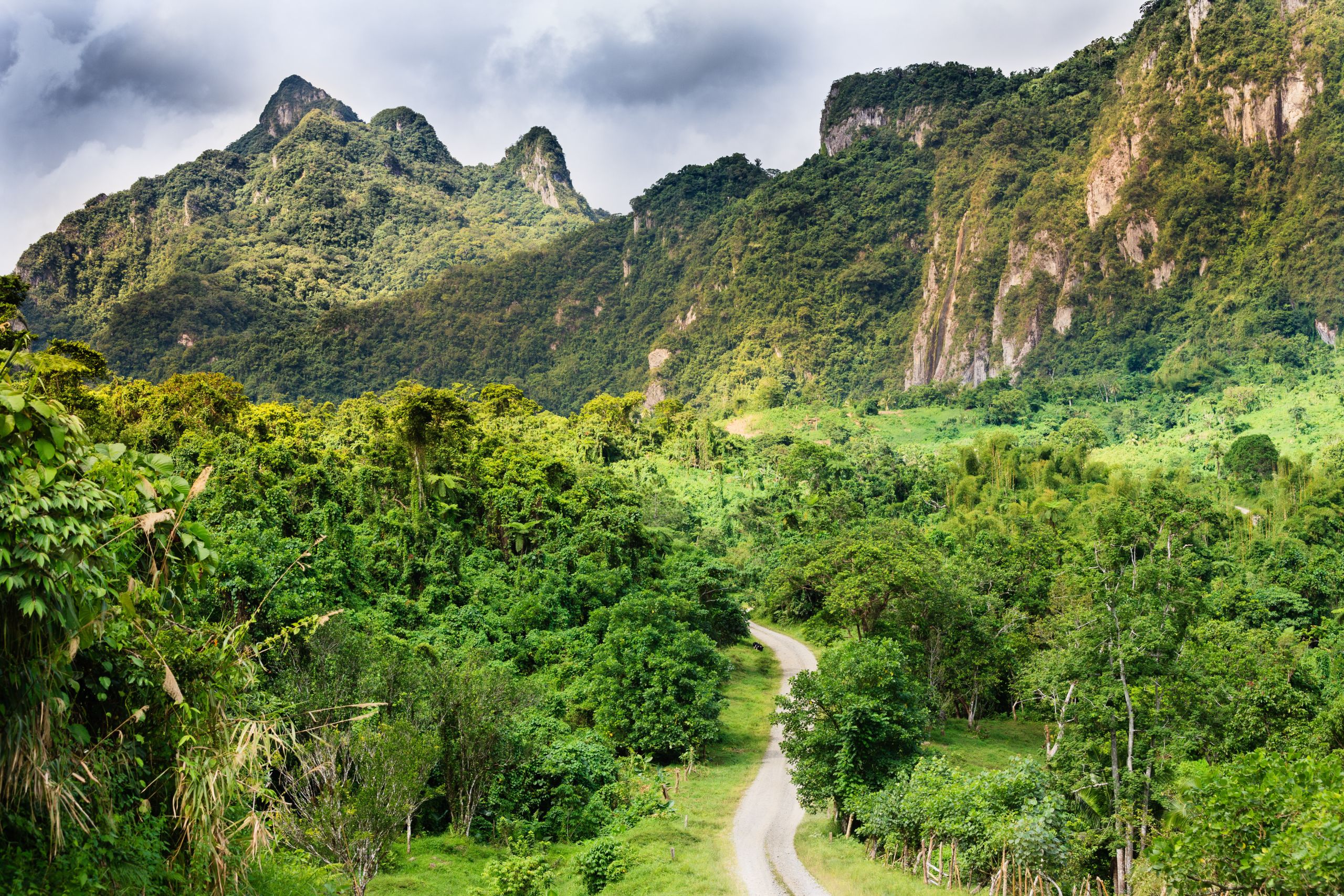
“To a certain extent, cultural values are considered by the government, but often it does not include issues around risk values and perceptions of risk,” Neef said. Some villages, he noted, see the known risks of sea-level rise and stronger storms as lesser than the risk of moving away from their ancestral land and losing intergenerational cultural value.
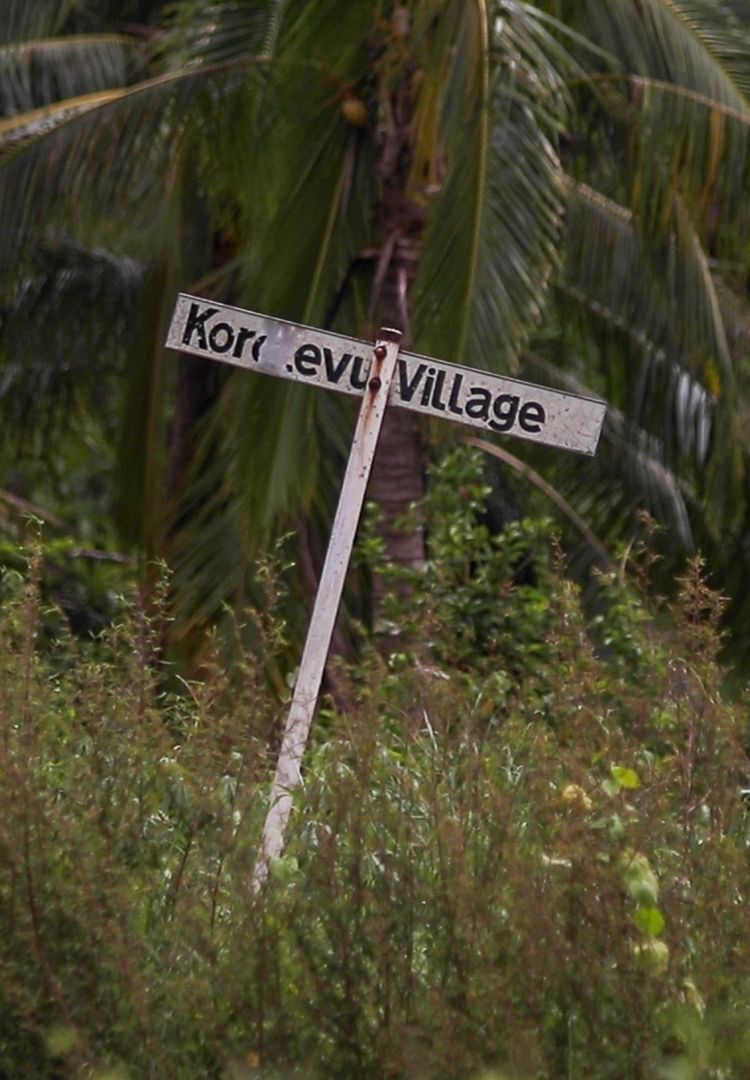
Some villages see the known risks of sea-level rise and stronger storms as lesser than the risk of moving away from their ancestral land.
Another of Neef’s concerns is in defining exactly who are the active and passive participants in any community, and ensuring that marginalized voices within communities, such as women or youth, are properly heard.
“There is often this tension within the community between those who want to leave and those who feel like their ties to land are strong, and they are not able to move,” Neef said.
One thing Neef’s team noticed during their field research in the villages of Votua and Nawaqarua in the lower Ba River Catchment in northwestern Viti Levu was a gender gap. “Many of the women we talked to, they were actually willing to relocate, while often the [mostly male] community leaders were saying ‘this is our ancestral land, we should not move,’” Neef said.

Some villages see the known risks of sea-level rise and stronger storms as lesser than the risk of moving away from their ancestral land.
Some villages see the known risks of sea-level rise and stronger storms as lesser than the risk of moving away from their ancestral land.
Expanding the role for technology and regional cooperation
There is a hope that remote sensing technology can play a role in helping Pacific Island nations prepare for climate-induced migration and displacement, by both identifying high-risk communities, but also ensuring that the location people are relocated to can support their livelihoods.
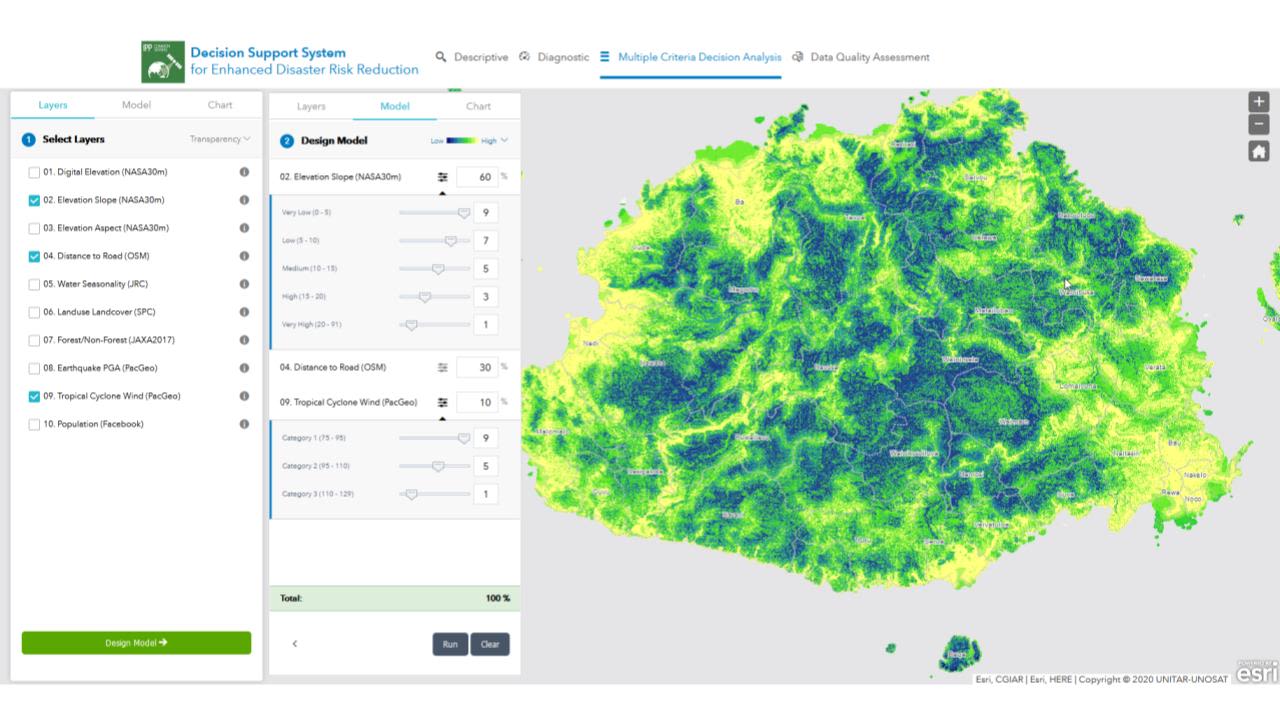
The IPP CommonSensing’s DRR Decision Support Tool provides governments with actionable data sets.
The IPP CommonSensing’s DRR Decision Support Tool provides governments with actionable data sets.
One tool is the IPP CommonSensing’s DRR Decision Support Tool, which provides governments with actionable data sets aimed at supporting risk-informed planning across sectors.
What is the International Partnership Programme? The UK Space Agency’s International Partnership Programme is a £152 million ($199 million) multiyear program launched in 2015, which uses U.K. organizations’ space knowledge, expertise, and capability to provide a sustainable, economic, or societal benefit to low- and middle-income countries. It is funded by the Department for Business, Energy & Industrial Strategy’s Global Challenges Research Fund, a £1.5 billion fund that forms part of the U.K. government’s official development assistance commitment.
“The DRR Decision Support Tool piqued a lot of interest in efforts towards climate-related migration since it enables users to assess areas that are vulnerable … and get a perspective on potential remedial interventions,” said Lebaiatelaite Gaunavinaka, in-country representative for UNITAR-UNOSAT, who is embedded within Fiji's Climate Change Office for IPP CommonSensing
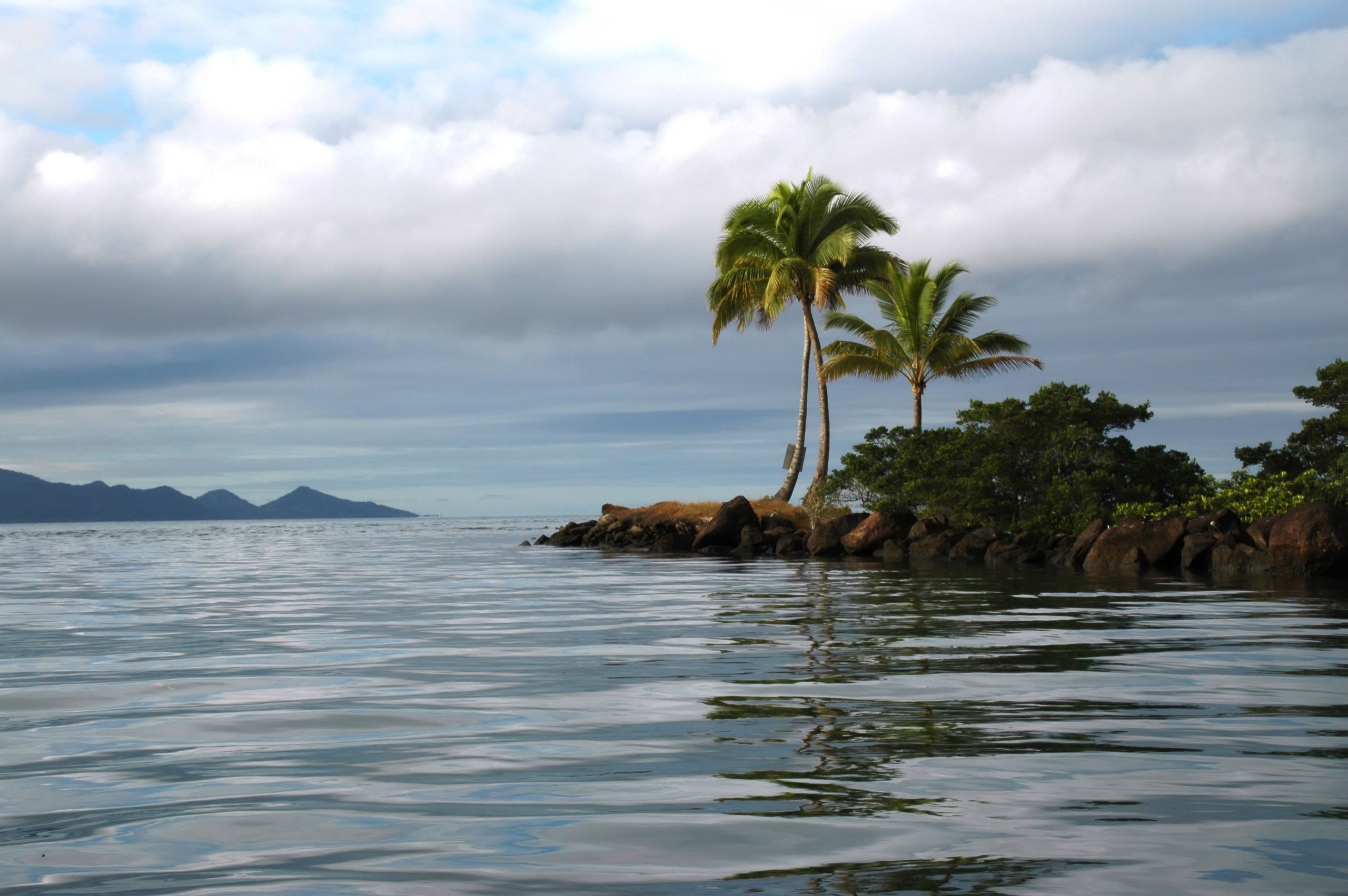
Fiji is not alone in embarking on community-led relocation. Countries across the Pacific are facing similar, if not greater challenges. As a relatively large country with more resources, Fiji can play a role as a source of information and knowledge sharing for its smaller neighbors.
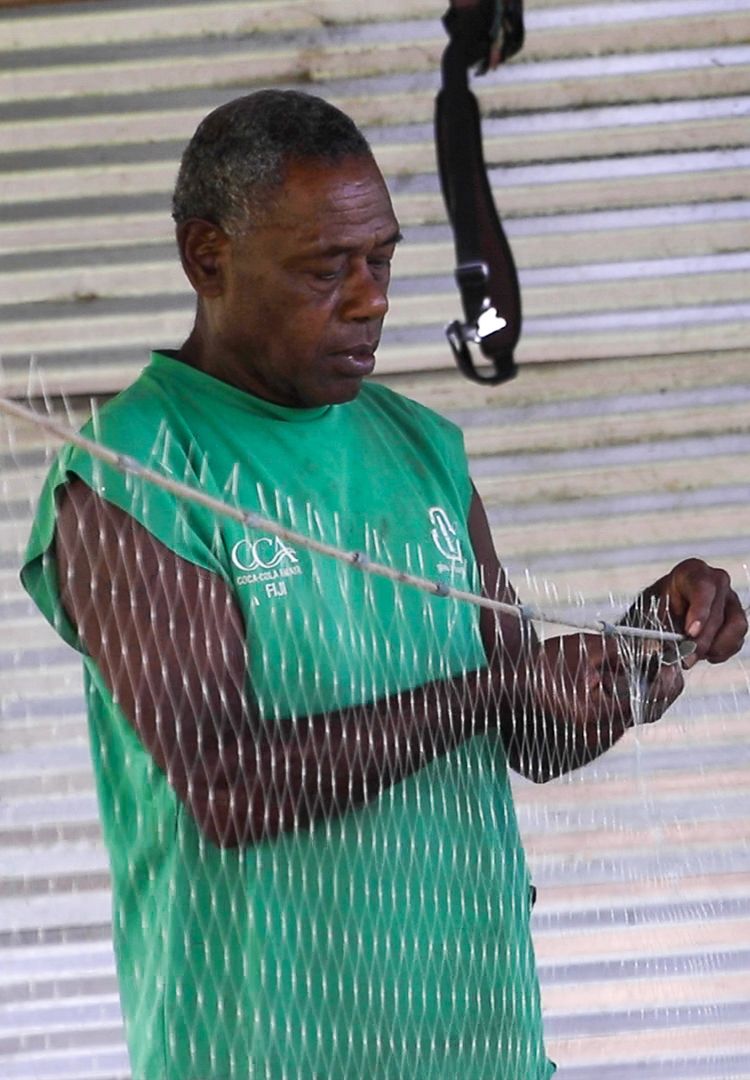
A Korolevu resident repairs a fishing net.
This year, the country has taken on the role of vice-chair for the Platform on Disaster Displacement, or PDD, an initiative working toward better protection for people displaced across borders in the context of disasters and climate change. Fiji’s goal is to build the groundwork toward a more robust regional framework for displacement policy.
“Right now displacement is only country-led. Given the impacts of climate change moving forward, disaster displacement will be an issue for the region.”
As Fiji recovers from Cyclone Yasa — the second category five storm to hit the country in a decade — the country plans to push forward on community-led relocation efforts to ensure that when the next storm hits, more of the most vulnerable villages are out of harm’s way. The lessons they learn could guide climate displacement policy and guidelines across the Pacific, and even globally, in the coming decades.

A Korolevu resident repairs a fishing net.
A Korolevu resident repairs a fishing net.
Visit the Turning the Tide series for more coverage on climate change, resilience building, and innovative solutions in small island developing states. You can join the conversation using the hashtag #TurningtheTide.
Reporting: Nithin Coca
Editor: Helen Morgan
Multimedia producer: Naomi Mihara
Photos/video: Walter Gerard
